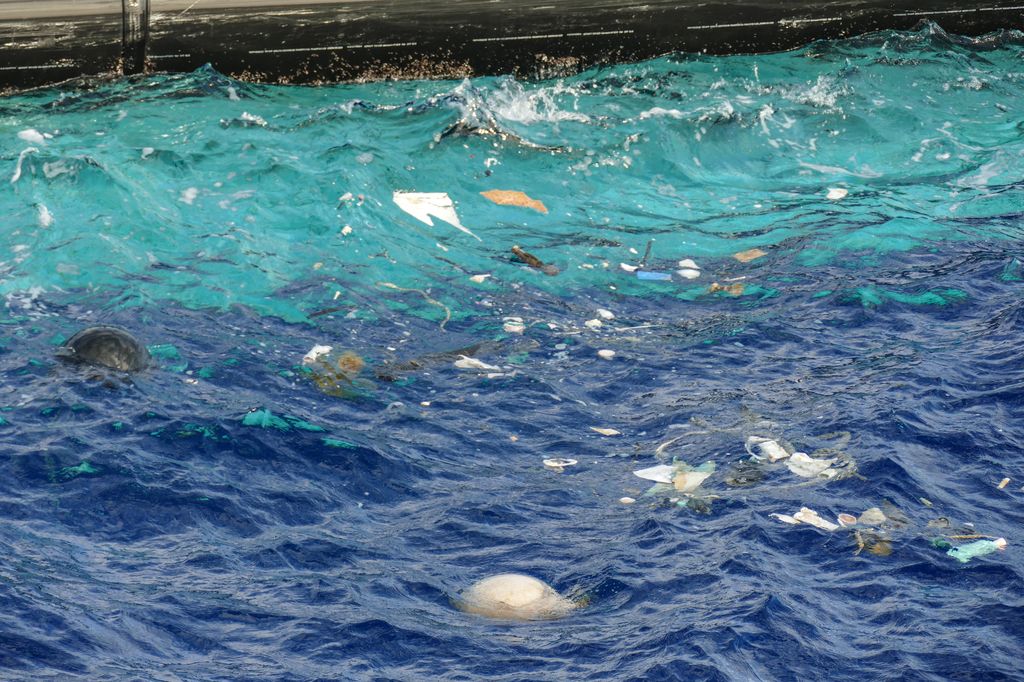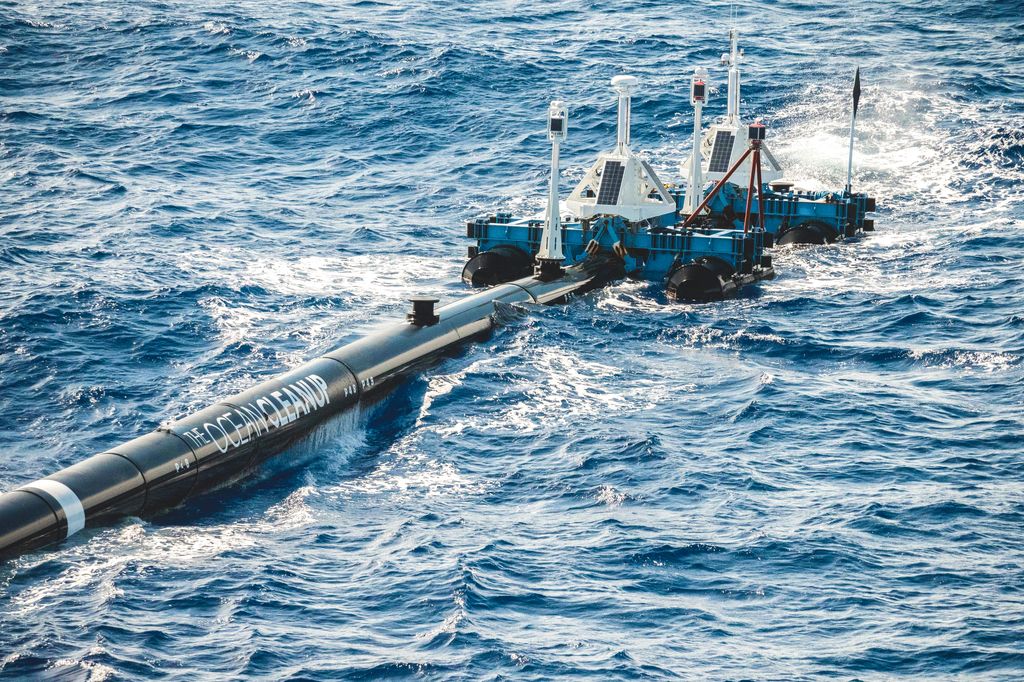Great Pacific Garbage Patch —(Map)
In September, a group called Ocean Cleanup towed a huge floating screen out to sea. The screen was meant to clean up plastic pollution. Now the device is broken and being towed to Hawaii.
Ocean Cleanup’s plan was to gather floating plastic pollution in the Great Pacific Garbage Patch (GPGP), making the plastic easier to remove. The GPGP is one of five huge areas in the world’s oceans that are a “soup” of floating trash. The GPGP is three times as large as the country of France.

(Source: The Ocean Cleanup.)
The Ocean Cleanup project was started by Boyan Slat. He’s now 24, but he was 18 when he first got the idea. His device is a 2,000-foot-long (600-meter-long) floating U-shaped tube with a screen hanging below it. Mr. Slat hopes the tube and screen will be pushed by the water and the winds, collecting plastic trash inside the U. That would make it easy for a ship to remove the plastic and take it back to land.

(Source: The Ocean Cleanup.)
At first, the device was simply called System 001. Mr. Slat sees System 001 as a test for his idea – a way to find out what problems the system has and how they can be fixed. Once the system works well, Mr. Slat hopes to build many more.
But System 001, which is now being called “Wilson”, has had some problems. It is collecting plastic, but it has had trouble keeping plastic inside the U. The Ocean Cleanup team thinks Wilson is moving too slowly to keep the plastic inside.

(Source: The Ocean Cleanup.)
The team tried making the opening of the U wider, but this did not help. Later, they put coloring in the water and recorded the movement of the water with a drone (a small remote-controlled aircraft). The team hoped studying the movement of the water, the plastic, and Wilson would help them understand what the problem was.
But on December 29, workers discovered that a 60-foot (18-meter) section of Wilson had broken off. This wasn’t dangerous, but it’s a sign that Wilson is not made strongly enough to stand the constant motion of the sea. Mr. Slat points out that because of the waves, the system has already “moved back and forth about 1.5 million times since it’s been out there.”

(Source: The Ocean Cleanup.)
Now Wilson’s two separate pieces are being towed back to Hawaii for repairs. The team will study all the information they have collected. They want to fix the problems and figure out how to keep similar problems from happening in the future. Mr. Slat still sees this as just another test that is needed to make the system work well. He says he feels sure “that we’ll have the system back in the patch in a few months from now.”
It’s not all bad news. The team is also returning with about 4,400 pounds (2,000 kilograms) of plastic they’ve pulled out of the sea. When the system is working correctly, the team expects to collect about that much every two weeks.
😕
This map has not been loaded because of your cookie choices. To view the content, you can accept 'Non-necessary' cookies.
